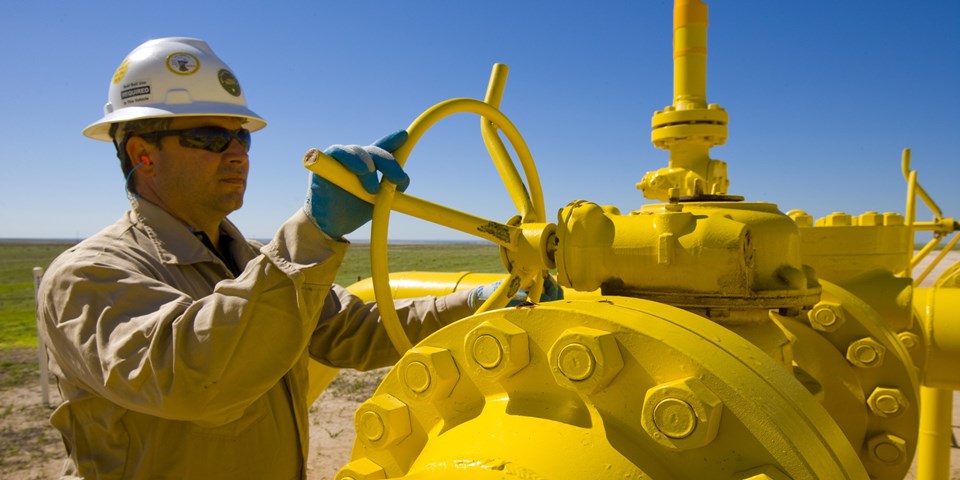By Brittani Schroeder and Sarah Bradley
Different Valves
In addition to drilling services, Thrash works with the surface wellheads and tree category. He enjoys the number of valves and different types of valves found on the trees. Each valve has a different purpose; one may be used to control the well attached to the blowout preventer (BOP), and another may control the well into the production unit offshore. The fact that such similar parts can function in different ways is fascinating to Thrash. “All of it somehow is intrinsically designed to keep pressure in, and they way in which our engineers design valves to keep pressure in fascinates me.”
Gate valves are the main type of valves used inside their trees. In different parts of the world, the trees are rated differently. “They are rated anywhere from 5000 psi up to 20,000 psi. The valves can be rated the same but can be put in completely different situations. Thrash explained that a valve sitting above ground in Oman rated at 10,000 psi has the same rating as a valve in the Gulf of Mexico, and yet that valve will have five miles of water on top of it, which makes the valve completely different.
Trials and Tests
Thrash and his team buy everything from the really high-end, high-temperature valves for their work in Iraq and Oman, to extremely cold-temperature valves for their work in Alaska. Due to the different temperatures, the company has to run many tests to make sure the unit can withstand the extreme temperatures. The equipment in Oman is tested up to 250°F; in Alaska the equipment is tested down to -250°F due to the permafrost on the slopes. The temperatures underground are regularly -175°F in Alaska.
The temperatures can be a big issue for the unit and the materials they are made of. “We do have some stainless steel, but mostly they are made of carbon steel. We actually have a design that is both carbon and stainless steel. The top is made of carbon, and the bottom is stainless steel for our work in Alaska.
For the extreme temperatures and pressures, the units also need to be tested for the worst-case scenario. Sometimes it can cost hundreds of thousands of dollars to do these extreme tests, plus the cost of the equipment.
A Time to Innovate
As the world moves toward automation, most companies in this industry have been developing remote automation and artificial intelligence. “We have had remote automation for a while now. It has been roughly four or five years since we started using wireless technology,” said Thrash. Those working in the industry wanted to make sure that all new technology was safe and was not going to create sparks or cause a fire. Nowadays, Thrash finds his team being drawn to large databases, what he calls “data lakes”, and super computers, which brings in useful knowledge for their business. BP has one of the largest super computers in the world; they use this super computer to find oil by seeing behind salt domes, for example.
There are many opportunities to modernize and bring in new technology, especially when it comes to increasing safety. “It is all about trying to get people out of harm’s way. We could automate something and build a robot for the job—it may cost twice or three times as much, but if we can move people back out of danger, it is worth it in the end,” Thrash explained.
Advice for the Newcomers
The main thing Thrash wanted to get across to newcomers? “Do not dismiss oil and gas.” In the past, Thrash has seen 200 college graduates get hired, and everyone that remains loves their job in the oil and gas industry. Most graduates want to be challenged every day they come to work with new technologies, and they want to work with creative and smart people. “If you want that kind of exciting daily challenge, energy companies are the place to be.”


